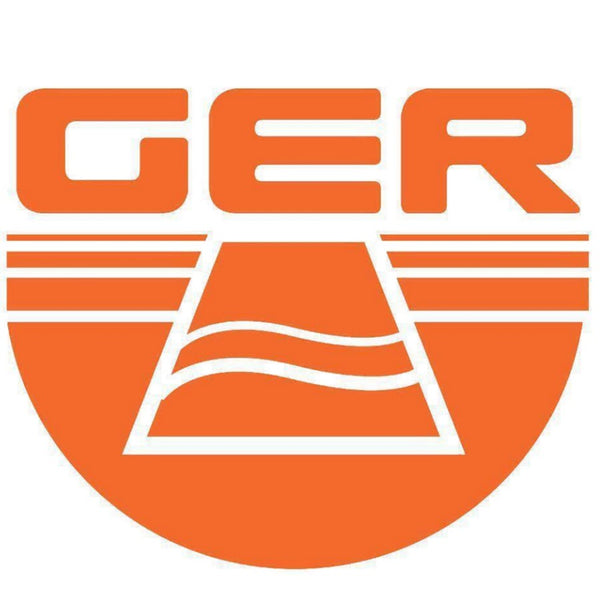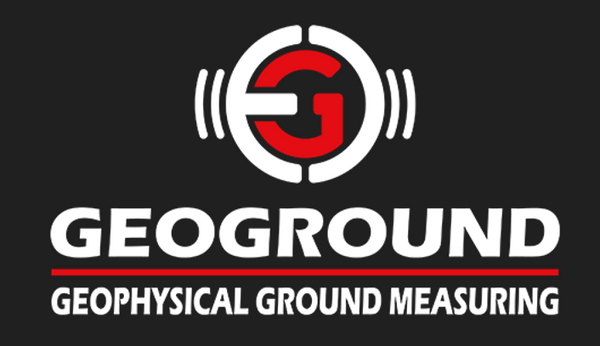
Your heart does not beat in a perfectly regular rhythm as would a metronome, and, in fact, beat-to-beat variations in your heart rate are healthy and normal. To understand more about how Garmin and Firstbeat use HRV to give you better information about the state of your body, start with why HRV exists.
Your heart is controlled by your autonomic nervous system (ANS), which is the involuntary part of your nervous system. Furthermore, there are 2 branches of the ANS called the sympathetic and parasympathetic branches. The sympathetic branch of your ANS is active when you’re under some kind of stress. It is the part of your ANS that puts all systems on alert. By contrast, the parasympathetic branch is the more relaxed part that just hums along when you are relaxed and not about to be charged by a mountain lion. When the sympathetic branch is more active, your heart rate typically increases, and it beats in more regular rhythm — meaning HRV decreases.
On the other hand, when the parasympathetic branch is more active, your heart rate decreases, and it beats when it gets around to it to meet the body’s needs, but not on such a strict schedule as when the sympathetic branch is in charge. In other words, HRV increases. Because of these characteristics, HRV is a great indicator of the balance between the activity of the 2 branches of the autonomic nervous system, and therefore it’s an indirect measurement of stress. Higher HRV means lower stress.
There are many different statistical methods used to characterize HRV, but the HRV stress test (formerly called stress score) feature makes life a lot easier by putting your stress on an easy-to-understand 0-to-100 scale specifically designed to be another tool for you to assess how your body is doing and how it’s handling training stress and life stress.
Although HRV decreases as you begin to exercise and continues to decline as you go harder, it still yields useful information even when you’re running fast. Available on some Garmin devices, the lactate threshold feature uses a Firstbeat feature that looks for a point of increasing HRV that corresponds closely to your lactate threshold heart rate.
EPOC
EPOC is the phenomenon where for a period of time after exercise, your body will continue to use oxygen at a higher rate than it would otherwise at rest. This makes sense. When you exercise, you disturb your body’s usual state, and this disturbance requires your body to do some extra work to put things back to normal. In fact, the point of training is that after exercise, your body will build itself back up to normal and then some. It is the “and then some” — also called supercompensation — that makes you a little fitter and faster than you were before.
Since the oxygen used by your body is related directly to the amount of energy it uses, the EPOC measurement is perfect for quantifying how much your body’s normal state (homeostasis) is disturbed by a session of exercise. In other words, EPOC is a great measure for exercise volume or dose, since it quantifies how much work your body had to do to get back to normal — and then some.


Running Dynamics
Ground Contact Time
This is the amount of time in each step that you spend on the ground while running. Ground contact time is typically pretty short, so it is measured in milliseconds. In fact, ground contact time tends to be especially short for elite runners; they will often have ground contact times of less than 200 ms. Virtually all experienced runners have ground contact times under 300 ms, likely because they have learned to “pick up” their feet quickly and not to overstride as they are landing. Overstriding describes a running style where the foot lands too far in front of the body leading to braking forces at impact and, typically, longer ground contact times.
Ground Contact Time Balance

By monitoring the balance between your left and right foot ground contact time (GCT), this measures your symmetry as you run. On your Garmin watch, it’s always displayed as a percentage greater than 50% with an arrow to the left or right, to show which foot is on the ground longer. For most people, a more symmetrical running form is preferable. Color gauges on Garmin watches and Garmin Connect™ online fitness community show how balanced you are compared to other runners. Many runners report that GCT balance tends to deviate farther from 50/50 when they run up or down hills, when they do speed work or when they are fatigued. Anecdotally, some runners also notice that injuries are reflected in greater imbalance.
Cadence
Simply put, this is how many steps you take per minute, counting both feet. It’s a commonly measured running metric and can tell you a lot about your form. For example, at a given pace, quicker cadence and shorter stride length result in smaller forces at many places throughout the body, such as at the ankles, knees and hips. The reduced magnitude of these forces is widely believed by experts to also reduce injury risk. It’s clear that running cadence can be increased only so far, but for more injury-prone runners in particular, working on increased cadence could be beneficial. An often-cited target for running cadence is 180 steps per minute, though taller runners tend to have somewhat slower cadence. Interestingly, higher cadence is also associated with lower vertical oscillation and shorter ground contact time.
Stride Length
Another key part of measuring your running form — stride length — is how far you travel with each left and right step. It’s shown at the end of your run or as an in-activity data field you can view as you run. Later, you can view this data in more detail on Garmin Connect™ to see how your stride length varies with your pace, cadence, elevation or other metrics. Your stride length is dependent on a number of factors, including body morphology, muscular strength and flexibility.
Vertical Oscillation
This reflects the amount of “bounce” in each step while you run. Measured at the torso, it tells you, in centimeters, how much distance you are traveling up and down with each step. Many running coaches believe that lower vertical oscillation is more economical, because less energy is wasted going up and down. Garmin has researched many runners of all different levels. In general, more experienced runners tend to have lower vertical oscillation. However, faster paces often come at a cost of somewhat higher vertical oscillation. Vertical ratio (see below) takes this into account. Another advantage of lower vertical oscillation is that it typically means less stress on the lower body at impact.
Vertical Ratio

This reflects your running efficiency based on how well you propel yourself forward with each stride. Vertical ratio is the amount of “bounce” in your stride, divided by your stride length, then expressed as a percent. Since stride length is the horizontal movement of running, it’s the benefit of the action, whereas vertical oscillation is one of the energy costs of running. A low vertical ratio number indicates a small cost for a large benefit. That means more efficient running.
Running Power
For years, elite cyclists have used power data as the most reliable way to measure the actual exercise load of their ride. Now you, too, can train with power on your runs by downloading the Running Power app – from the Connect IQ™ Store – onto your compatible watch. The Running Power app accounts for multiple factors to provide a more accurate and responsive exercise load calculation.
Developed by Garmin Labs, the Running Power app taps into metrics — such as pace, vertical oscillation, grade and even local wind conditions — to calculate the amount of power you’re applying at the ground as you run. When you know how much power you’re expending from minute to minute and mile to mile, you’re better able to pace yourself, which can help keep you from tiring out too quickly.
Think of your body’s energy as the battery of your smartphone. You can turn up the screen’s brightness all the way, but, as a result, the battery won’t last as long. Or you can conserve battery by dimming the screen and getting a longer battery life. Likewise, by getting to know your body and its power output while running in different conditions, you can monitor this data to conserve your energy. For marathons and other long-distance runs, this can help you fine-tune your training and performance on race day.
This running power model from Garmin determines the propulsive power applied at the road by considering the major components of the work done during running. These components, how they change and the data used to compute them are listed in the table below.
|
Component of Running Power |
What is it? |
Source of Data Used to Compute |
|
|
Kinetic Power |
Power required to change your pace |
Speed from the watch |
|
|
Potential Power |
Power required to run up or down a hill |
Elevation data from the barometer on the watch |
|
|
Vertical Oscillation Power |
Power required for vertical oscillation on each step |
|
|
| Horizontal Oscillation Power | Power required for horizontal oscillation on each step (you brake a bit when you hit the ground, then accelerate again as you push off) |
|
|
| Wind/Air Power |
Power to overcome air resistance — greater if running into a headwind and less if you are running with the wind at your back |
|
|
| Note: The equations to compute these components of running power also require some constant values such as your weight, acceleration due to gravity and the density of air. | |||
Following are examples of the contributions of the components of running power from a tester with cadence in the range of 162-182, vertical oscillation 6.2–8.9 cm and GCT in the range of 262–296 ms.

So what does this mean for you? As you run, you will see that running power responds quickly when you speed up or slow down. You’ll also find that running power is higher when you’re running up hills than when you’re running at the same pace on flat ground. Similarly, running power will decrease when you run down a hill — though not by as much. In this way, you can use running power in addition to pace to help manage your effort over varying terrain.
With the wind power feature enabled, the Running Power app can even help you gauge your effort when running on a windy day. Wind can have a large effect on the effort required to maintain your usual pace, which shouldn’t surprise you if you’ve ever run into a stiff headwind. The Running Power app uses your heading from GPS and reported wind conditions for your area, augmented by data from the barometer on your watch, to determine how much wind you’re likely experiencing. Try running back and forth on a windy stretch of road and you will see how much higher your power is when you run into the wind. If you typically run in sheltered areas, or you just don’t want the app to account for wind, simply disable this feature within the app settings in the Garmin Connect™ app.
Many runners ask how running power correlates with heart rate. The 2 factors are certainly related as your muscles require more oxygen when they are generating more power. When viewing your charts post-run, you will see that when power goes up, heart rate follows a little while after. Avoiding this delay in response to changes (such as pace, hills or wind) is one of the advantages of using power rather than heart rate to gauge your effort when you’re running. Also, running power doesn’t depend on physiological factors — such as hydration level or how well-rested you are — the way heart rate does.

Many runners are also surprised that their running power is so much higher than their bike power. In fact, running power is expected to be higher than bike power because metabolic efficiency is much higher for running (around 40-45%) than for cycling (around 20-25%). This means that athletes can convert the same amount of oxygen into more power when running than we can do when cycling. Or, thinking in terms of heart rate, we can produce more power for the same heart rate. This is primarily because when we run, we benefit from passive recoil of elastic elements such as tendons. Simply put, energy is stored when we land and returned as we push off. The same is not true for cycling.
To help you train with running power, you can choose to download apps to show Current Running Power, Lap Running Power, Last Lap Running Power, Average Power or all 4 of those at once. Some runners also use zones or alerts to monitor their running power. The app settings enable you to set up 5 custom running power zones and/or high and low running power alerts to help you keep your running power within a target range.
If you already own the right Garmin devices, adding power to your run is free. All you need is a compatible Garmin watch and 1 of these 3 accessories: HRM-Run, HRM-Tri or the Running Dynamics Pod. Download the Running Power app now to get access to real-time power data.
































